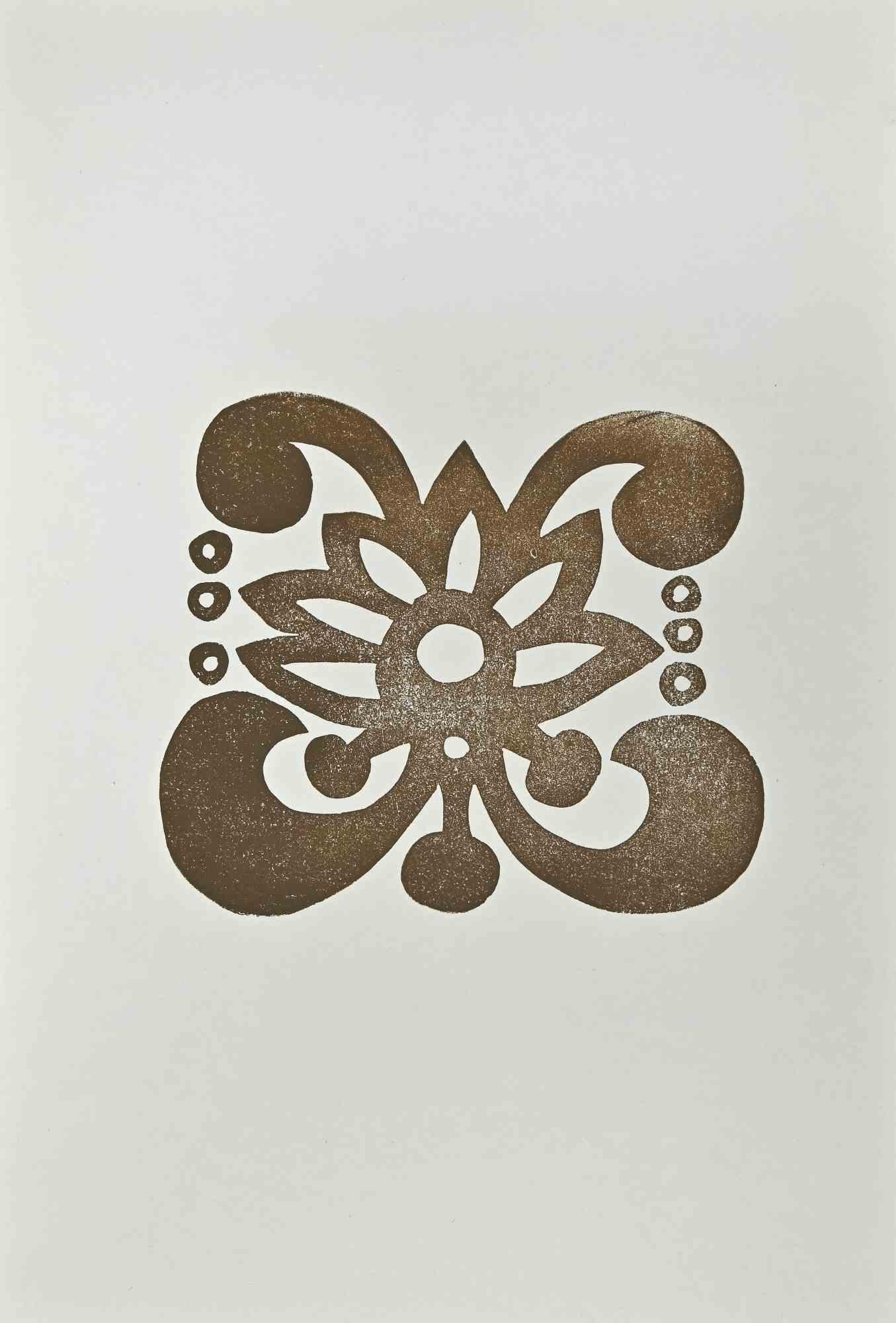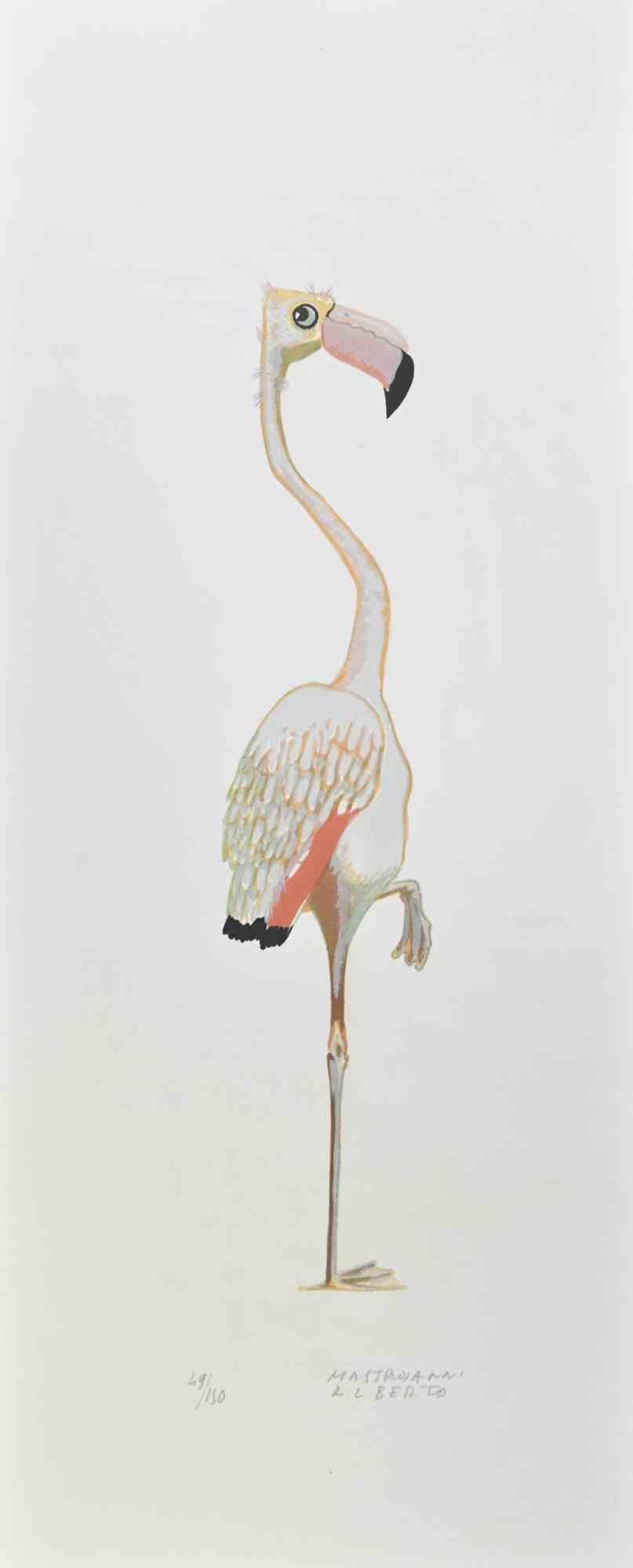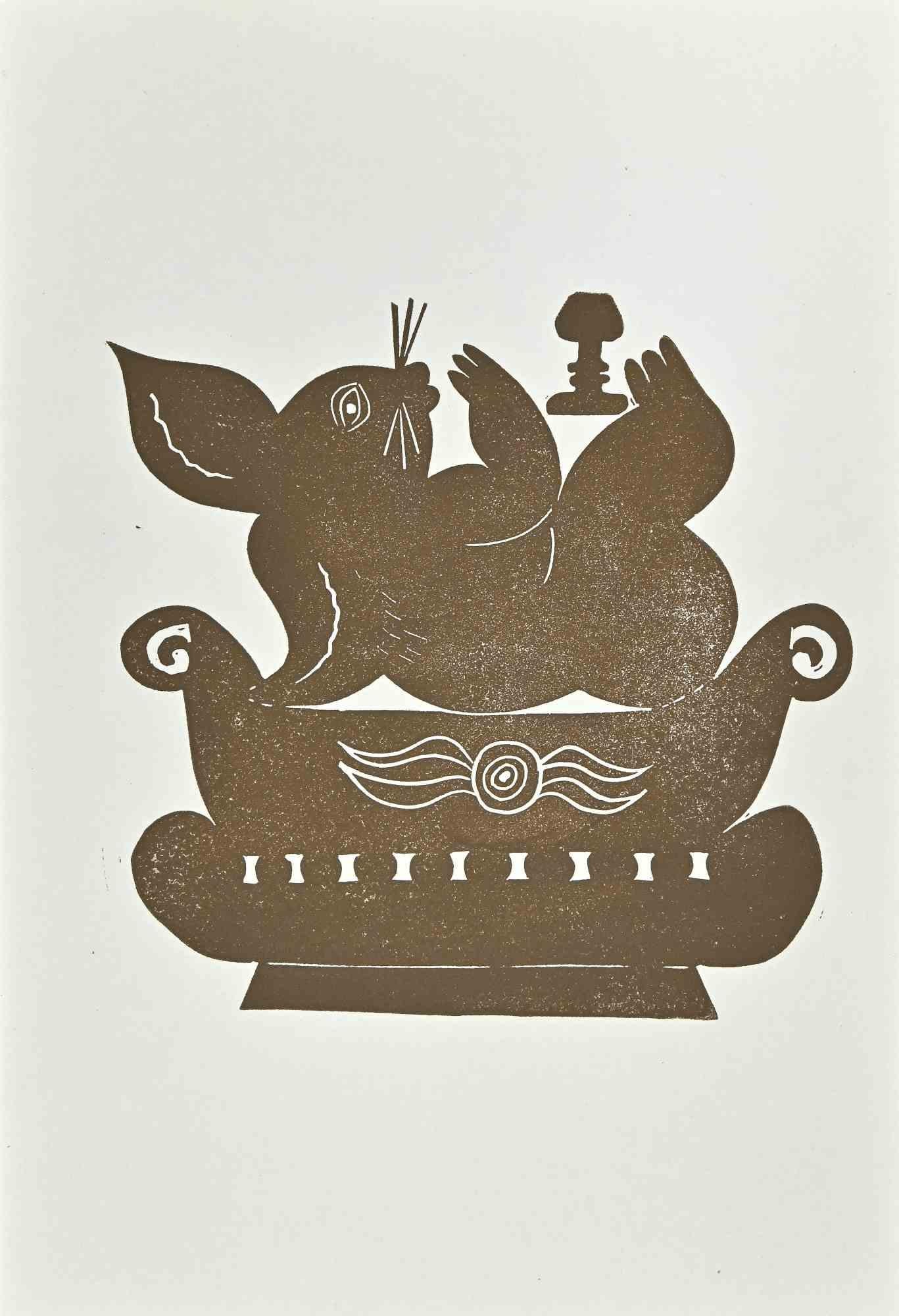Items Similar to Magritte, Deux Tourterelles, dans la Chaude Pénombre de Leur Maison (after)
Want more images or videos?
Request additional images or videos from the seller
1 of 11
Magritte, Deux Tourterelles, dans la Chaude Pénombre de Leur Maison (after)1968
1968
About the Item
Original Limited Edition Lithograph in Colours on Vélin d'Arches paper. Edition: 350, plus proofs. Signed in the plate by the artist; hand signed in pencil by the printer, Fernand Mourlot. Excellent Condition; never framed or matted. Notes: From the suite, Les Enfants Trouvés de Magritte, 1968. Published by A.C. Mazo et Cie, Paris; printed by Fernand Mourlot, Paris, 1968. Les Enfants Trouvés de Magritte comprised twelve coloured lithographs, four of which, Ma Mère l'Oye, Pierreries, La Belle Captive and La Traversée Difficile were created specifically for Les Enfants Trouvés by Magritte while he was suffering from pancreatic cancer to which he succumbed in 1967, but executed posthumously in 1968 by the renowned fine art printer Fernand Mourlot in Paris. The remaining eight, from a work entitled the Domaine Enchanté, are after murals which Magritte painted for the Municipal Casino at Knokke-le-Zoute in Belgium. Magritte's graphic work is scarce, with only five works created during his lifetime—two lithographs and three etchings for which he personally worked the plates or stones. In addition there were another fifteen etchings drawn on the plate in collaboration with the master printer George Visat but several of these were published posthumously.
RENÉ MAGRITTE (1898-1967) Belgian surrealist artist who is well known for his thought-provoking images that take the perceptions of painting into another realm of reality. As synonymous with Surrealism as Picasso with Cubism, Magritte’s work frequently displays a collection of ordinary objects in unusual contexts, henceforth, creating an illusion of new meanings for familiar objects. As stated by Magritte [in regard to his paintings]: “visible images which conceal nothing; they evoke mystery and, indeed, when one sees one of my pictures, one asks oneself this simple question, what does that mean?” Because of his unparalleled talent, Magritte’s work has been exhibited throughout the world and today, remains of the most widely collected surrealist artist of his time.
- Creation Year:1968
- Dimensions:Height: 17.5 in (44.45 cm)Width: 23.5 in (59.69 cm)
- Medium:
- Movement & Style:
- After:René Magritte (1898-1967, Belgian)
- Period:
- Condition:
- Gallery Location:Auburn Hills, MI
- Reference Number:1stDibs: LU1465214054292
About the Seller
4.9
Platinum Seller
These expertly vetted sellers are 1stDibs' most experienced sellers and are rated highest by our customers.
Established in 2002
1stDibs seller since 2021
855 sales on 1stDibs
Typical response time: <1 hour
- ShippingRetrieving quote...Ships From: Auburn Hills, MI
- Return PolicyA return for this item may be initiated within 1 day of delivery.
Auctions on 1stDibs
Our timed auctions are an opportunity to bid on extraordinary design. We do not charge a Buyer's Premium and shipping is facilitated by 1stDibs and/or the seller. Plus, all auction purchases are covered by our comprehensive Buyer Protection. Learn More
More From This SellerView All
- Magritte, Pierreries (after)By René MagritteLocated in Auburn Hills, MIOriginal Limited Edition Lithograph in Colours on Vélin d'Arches paper. Edition: 350, plus proofs. Signed in the plate by the artist; hand signed in pencil by the printer, Fernand Mourlot. Excellent Condition; never framed or matted. Notes: From the suite, Les Enfants Trouvés de Magritte, 1968. Published by A.C. Mazo et Cie, Paris; printed by Fernand Mourlot, Paris, 1968. Les Enfants Trouvés de Magritte comprised twelve coloured lithographs, four of which, Ma Mère l'Oye, Pierreries, La Belle Captive...Category
1960s Surrealist Animal Prints
MaterialsLithograph
- Bonnard, Composition (Terrasse 54), Pierre Bonnard Correspondences (after)By Pierre BonnardLocated in Auburn Hills, MILithograph on Velin d'Arches paper, mounted on supporting sheet by the publisher, as issued. Inscription: Signed in the plate and unnumbered, as issued. Good condition. Notes: From t...Category
1940s Modern Figurative Prints
MaterialsLithograph
- Bonnard, Composition (Terrasse 54), Pierre Bonnard Correspondences (after)By Pierre BonnardLocated in Auburn Hills, MILithograph on Velin d'Arches paper, mounted on supporting sheet by the publisher, as issued. Inscription: Signed in the plate and unnumbered, as issued. Good condition. Notes: From t...Category
1940s Modern Figurative Prints
MaterialsLithograph
- Bonnard, Composition (Terrasse 54), Pierre Bonnard Correspondences (after)By Pierre BonnardLocated in Auburn Hills, MILithograph on Velin d'Arches paper, mounted on supporting sheet by the publisher, as issued. Inscription: Signed in the plate and unnumbered, as issued. Good condition. Notes: From t...Category
1940s Modern Figurative Prints
MaterialsLithograph
- Bonnard, Composition (Terrasse 54), Pierre Bonnard Correspondences (after)By Pierre BonnardLocated in Auburn Hills, MILithograph on Velin d'Arches paper, mounted on supporting sheet by the publisher, as issued. Inscription: Signed in the plate and unnumbered, as issued. Good condition. Notes: From t...Category
1940s Modern Figurative Prints
MaterialsLithograph
- Bonnard, Composition (Terrasse 54), Pierre Bonnard Correspondences (after)By Pierre BonnardLocated in Auburn Hills, MILithograph on Velin d'Arches paper, mounted on supporting sheet by the publisher, as issued. Inscription: Signed in the plate and unnumbered, as issued. Good condition. Notes: From t...Category
1940s Modern Figurative Prints
MaterialsLithograph
You May Also Like
- Marino Marini - Horses - Original LithographBy Marino MariniLocated in Collonge Bellerive, Geneve, CHMarino Marini - Horses - Original Lithograph 1951 Dimensions: 32 x 24 cm From the art review XXe siècle Unsigned and unumbered as issuedCategory
1950s Surrealist Animal Prints
MaterialsLithograph
- Jean Arp - Original LithographBy Jean ArpLocated in Collonge Bellerive, Geneve, CHJean Arp - Original Lithograph 1951 Dimensions: 32 x 24 cm From the art revue XXe siècle Unsigned and unumbered as issuedCategory
1950s Surrealist Animal Prints
MaterialsLithograph
- Max Ernst - Elektra - LithographBy Max ErnstLocated in Collonge Bellerive, Geneve, CHMax Ernst - Elektra Lithograph 1939 Dimensions: 32 x 24 cm Signed in the plate From XXe siècle Unsigned and unumbered as issuedCategory
1930s Surrealist Animal Prints
MaterialsLithograph
- Marino Marini - Rider - Original LithographBy Marino MariniLocated in Collonge Bellerive, Geneve, CHMarino Marini - Rider - Original Lithograph 1955 Dimensions: 32 x 24 cm From the art review XXe siècle Unsigned and unumbered as issuedCategory
1950s Surrealist Animal Prints
MaterialsLithograph
- Max Ernst - Composition - Original LithographBy Max ErnstLocated in Collonge Bellerive, Geneve, CHMax Ernst - Composition - Original Lithograph 1958 Dimensions: 32 x 24 cm XXe siècle Unsigned and unnumbered, as issued Max Ernst was born in Bruhl, a place near Cologne, in Germany. He was raised in a strict Catholic family, and both of his parents were disciplinarians who were dedicated to training their children into God-fearing and talented individuals. Although his father was deaf, Ernst learned so much from him, particularly when it comes to painting. In fact, much of his early years were lived under the inspiration of his father who was also a teacher. He was the one who introduced painting to Ernst at an early age. In 1914, Ernst attended the University of Bonn where he studied philosophy. However, he eventually dropped out of school because he was more interested in the arts. He claimed that his primary sources of interest included anything that had something to do with painting. Moreover, he became fascinated with psychology, among other subjects in school. Primarily, Ernst's love for painting was the main reason why he became deeply interested with this craft and decided to pursue it later on in his life. During his early years, he became familiar with the works of some of the greatest artists of all time including Claude Monet, Paul Cezanne and Vincent van Gogh. He was also drawn to themes such as fantasy and dream imagery, which were among the common subjects of the works of Giorgio de Chirico. During World War I, Ernst was forced to join the German Army, and he became a part of the artillery division that exposed him greatly to the drama of warfare. A soldier in the War, Ernst emerged deeply traumatized and highly critical of western culture. These charged sentiments directly fed into his vision of the modern world as irrational, an idea that became the basis of his artwork. Ernst's artistic vision, along with his humor and verve come through strongly in his Dada and Surrealists works; Ernst was a pioneer of both movements. It was Ernst's memories of the war and his childhood that helps him create absurd, yet interesting scenes in his artworks. Soon, he took his passion for the arts seriously when he returned to Germany after the war. With Jean Arp, a poet and artist, Ernst formed a group for artists in Cologne. He also developed a close relationship with fellow artists in Paris who propagated Avant-Garde artworks. In 1919, Ernst started creating some of his first collages, where he made use of various materials including illustrated catalogs and some manuals that produced a somewhat futuristic image. His unique masterpieces allowed Ernst to create his very own world of dreams and fantasy, which eventually helped heal his personal issues and trauma. In addition to painting and creating collages, Ernst also edited some journals. He also made a few sculptures that were rather queer in appearance. In 1920s, influenced by the writings of psychologist Sigmund Freud, the literary, intellectual, and artistic movement called Surrealism sought a revolution against the constraints of the rational mind; and by extension, they saw the rules of a society as oppressive. Surrealism also embraces a Marxist ideology that demands an orthodox approach to history as a product of the material interaction of collective interests, and many renown Surrealism artists later on became 20th century Counterculture symbols such as Marxist Che Guevara. In 1922 Ernst moved to Paris, where the surrealists were gathering around Andre Breton. In 1923 Ernst finished Men Shall Know Nothing of This, known as the first Surrealist painting. Ernst was one of the first artists who apply The Interpretation of Dreams by Freud to investigate his deep psyche in order to explore the source of his own creativity. While turning inwards unto himself, Ernst was also tapping into the universal unconscious with its common dream imagery. Despite his strange styles, Ernst gained quite a reputation that earned him some followers throughout his life. He even helped shape the trend of American art during the mid-century, thanks to his brilliant and extraordinary ideas that were unlike those of other artists during his time. Ernst also became friends with Peggy Guggenheim, which inspired him to develop close ties with the abstract expressionists. When Ernst lived in Sedona, he became deeply fascinated with the Southwest Native American navajo art. In fact, the technique used in this artwork inspired him and paved the way for him to create paintings that depicted this style. Thus, Ernst became a main figure of this art technique, including the rituals and spiritual traditions included in this form of art. Pollock, aside from the other younger generations of abstract expressionists, was also inspired by sand painting of the Southwest...Category
1960s Surrealist Animal Prints
MaterialsLithograph
- Jean Arp - Original LithographBy Jean ArpLocated in Collonge Bellerive, Geneve, CHJean Arp - Original Lithograph 1962 Dimensions: 32 x 24 cm From the art review XXe siècle Unsigned and unumbered as issuedCategory
1960s Surrealist Animal Prints
MaterialsLithograph





